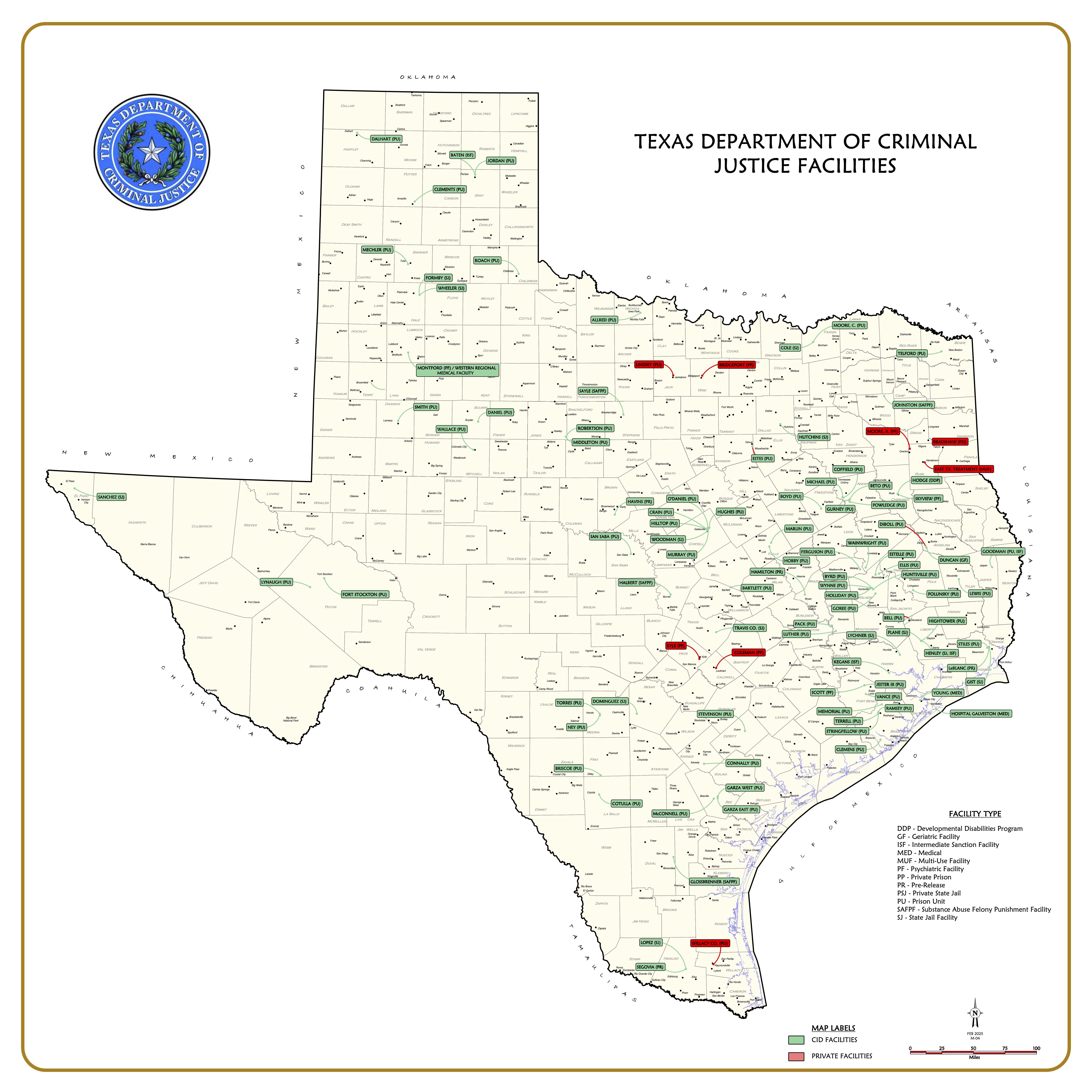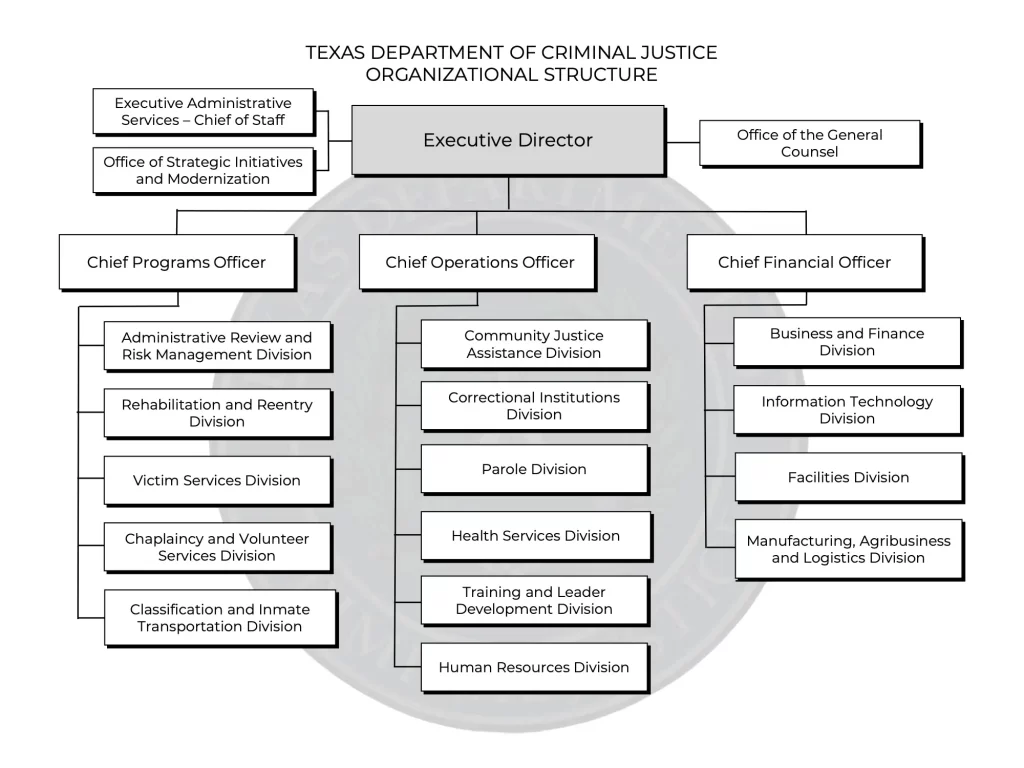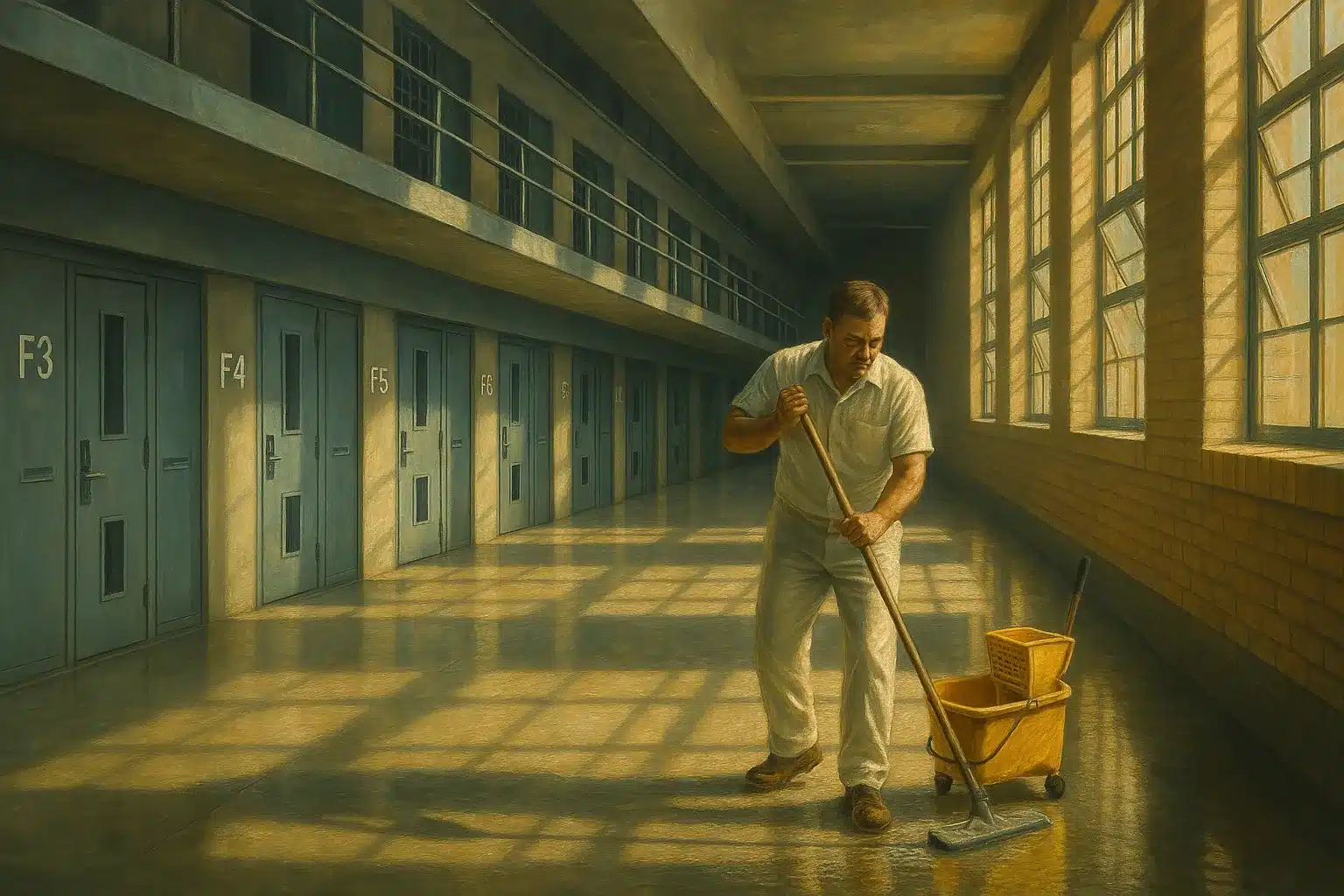The Texas Department of Criminal Justice (TDCJ) oversees one of the largest prison systems in the United States, managing more than 100 state prisons and jails and supervising over 118,000 inmates. The department is responsible for incarcerating individuals convicted of felony crimes and mid-level offensives known as state jail felonies, as well as overseeing parole and reintegration programs for prisoners reentering society.
Texas has long been known for its tough-on-crime policies, leading to one of the highest incarceration rates in the nation and the world. However, in recent years, the state has also taken steps toward criminal justice reform, including efforts to reduce recidivism, expand rehabilitation programs, and offer alternatives to incarceration for non-violent offenders. Despite these efforts, challenges remain, including overcrowding, aging prison infrastructure, and concerns over prison conditions, which have led to lawsuits and public scrutiny.
TDCJ operates with an annual budget of over $3 billion and employs nearly 38,000 staff, making it the largest state agency in Texas in terms of personnel (though smaller than the Texas Department of Transportation in budget terms).
The department plays a central role not just in punishment but also in rehabilitation, offering programs aimed at education, vocational training, and substance abuse treatment.
As Texas continues to balance public safety with reform initiatives, the TDCJ remains at the heart of ongoing debates about the future of the state’s criminal justice system. This article provides an overview of the Texas prison system, its facilities, population, structure, and frequently asked questions about how it operates.
Texas Prison Facilities
Throughout the state, TDCJ operates more than 100 prisons and state jails.

State prisons are only for inmates convicted of felony offenses or state jail felonies. TDCJ does not deal with misdemeanor offenders, who are housed in county jails or released on bond.
In addition to prisons and state jails, TDCJ operates three psychiatric units and runs its own accredited hospital in Galveston, in cooperation with the University of Texas Medical Branch.
For offenders who are released on parole, TDCJ’s parole division contracts with several agencies which operate halfway houses, also called transitional centers or residential reentry centers.
TDCJ is headquartered in Huntsville with additional offices in Austin, Texas.
Texas Prison Population
Texas prisons and state jails house approximately 118,000 inmates, according to the department’s 2021 annual statistical report.
- Gender: 93% male, 7% female
- Average inmate age: 40.8 years
- Average sentence length: 20.8 years
- Offense breakdown:
- 63% serving time for a violent offense
- 14% for drug-related crimes
- 9% for property crimes
- 14% for other offenses
These figures reflect Texas’ long-standing reliance on incarceration as a primary form of punishment, particularly for violent offenses. While the state has made some efforts to reduce its prison population through parole reforms and alternative sentencing programs, Texas still faces challenges in balancing public safety with rehabilitation and reducing recidivism rates.
Department Structure
The Texas Department of Criminal Justice is overseen by an 11-member state board. The board selects the agency’s executive director and sets overall policy direction. The members of the board are appointed by the Texas Governor.
The department encompasses three major divisions: Correctional Institutions Division, Parole Division, and the Community Justice Assistance Division, as well as other smaller divisions.

Additionally, the department works closely with the Windham School District, which operates programs at about 100 prison facilities in Texas. However, the school district is structurally separate from the Department of Criminal Justice.
Parolee Supervision
TDCJ’s Parole Division is responsible for operating the state’s adult parole system and supervising inmates on parole or mandatory supervision. Parole and mandatory supervision are similar but legally distinct categories.
- Parole is the discretionary release of an offender, by a Board of Pardons and Paroles decision, to serve the remainder of a sentence in the community under supervision.
- Mandatory Supervision is a legislatively mandated release of a prisoner to parole supervision when the combination of actual calendar time and good conduct time equal the sentence. Good conduct time is credited to an offender for participating in work and self-improvement programs.
The division does not make release decisions, nor does it decide whose parole should be revoked or what special conditions should be placed on releasees. Authority for those decisions rests with the Board of Pardons and Paroles, but the division works closely with the board and provides board members with documentation needed to make informed decisions.
Issues & Controversies
The Texas Department of Criminal Justice (TDCJ) has faced significant scrutiny over the years, with ongoing debates about prison conditions, sentencing policies, and the effectiveness of rehabilitation efforts. Texas has one of the largest prison populations in the United States, and while incarceration rates have declined in recent years, critics argue that the state’s approach to criminal justice remains overly punitive.
Many reform advocates push for policies that emphasize rehabilitation, alternatives to incarceration, and improved conditions for those behind bars.
One of the most pressing issues in Texas prisons is overcrowding and prison conditions. While the total prison population has declined from its peak, many facilities remain severely overcrowded, with some operating at or near full capacity. Limited resources, staff shortages, and an aging prison infrastructure contribute to poor living conditions for inmates.
The lack of air conditioning in most Texas prisons has drawn national attention, with reports of extreme heat-related illnesses and even deaths during the sweltering summer months. Lawsuits have been filed against TDCJ, demanding improvements.
Another ongoing issue is the treatment of inmates with mental illness and disabilities. Texas prisons house a significant number of individuals with serious mental health conditions, yet critics say mental health services remain underfunded and understaffed. Some inmates end up in solitary confinement for extended periods, worsening their mental health. TDCJ operates psychiatric units and a hospital in collaboration with the University of Texas Medical Branch, but advocates argue that more resources are needed for mental health care and diversion programs to keep people with mental illnesses out of prison in the first place.
Calls for reforms often face political resistance, as tough-on-crime policies remain generally popular in Texas. The future of Texas’ criminal justice system remains uncertain, with ongoing debates over how to balance public safety with fairness, rehabilitation, and human rights for those in the system.
